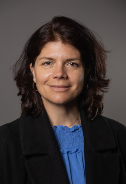Share the Wealth
Zbyszek Otwinowski
University of Texas Southwestern
Published August 22, 2012
When Zbyszek Otwinowski, who joined SBGrid in the Spring of 2012 along with 8 other laboratories at the University of Texas Southwestern, came from his native Poland to the United states 31 years ago, structural biology was not on his radar. He had come to the University of Chicago to study physics.
But just two years later, he met the late Paul Sigler, a pioneer in crystallography, who worked on the structure of RNA and regulatory complexes. After that, Otwinowski's path shifted away from physics and towards biology. Otwinowski, now a professor of biochemistry at UT Southwestern Medical Center, joined Sigler's lab in Chicago and focused on methods. "I covered it all, from building X-ray equipment and optics to developing computational methods," he says.
This work led him to develop several software products for structural biology. Specifically, he collaborates with Wladek Minor, professor of molecular biology at the University of Virginia, to develop HKL2000 and HKL3000. These software packages are collections of tools that analyze X-ray diffraction data and touch on many stages of the structure solution pipeline.
One of the primary focuses in this line of Otwinowski's work today involves trying to handle the uncertainty inherent in the crystals themselves. When solving structures, one simplifying assumption is that all of the crystal samples have exactly the same structure. But crystals of the same protein vary, radiation damages them, and even a single crystal may contain domains with distinct structural variations, exposed differentially when the crystal is rotated during data collection. "These non-isomorphisms are quite challenging in terms of data analysis," he says. "If the object we are measuring is changing, it creates serious problems in structure determination."
In some cases, this variability isn't critical. "It is more likely to be encountered in frontier-of-science projects," says Otwinowski, who recently collaborated on two such cases, providing his expertise to create custom structure solutions. One was the very large WAVE protein complex, published in Nature in 2010. Another was a chromatin complex of Co-REST and LSD1, published in 2006. He is now working to implement the data analysis advances prompted by such projects, such as estimates of non-decay radiation-induced changes, in an upcoming version of HKL2000.
Otwinowski's work on the chromatin complex, which is involved in histone demethylation, one of the critical steps in the control of gene transcription, triggered an interest in a broader question of chromatin organization. After years of study, Otwinowski and colleagues realized that there are additional, not yet discussed levels of chromatin organization.
Specifically, he saw that the various data analysis methods used to solve structures could be applied to analyzing sequencing and gene expression data to understand cells' transcriptional regulation in new and unexpected ways. "This work touches on systems biology," he says. "There's probably much more to the story of the chromatin structure."
Otwinowski only recently joined SBGrid, though he has been using the tools distributed through SBGrid for decades. "We hope SBGrid will simplify our jobs," he says.






























































































